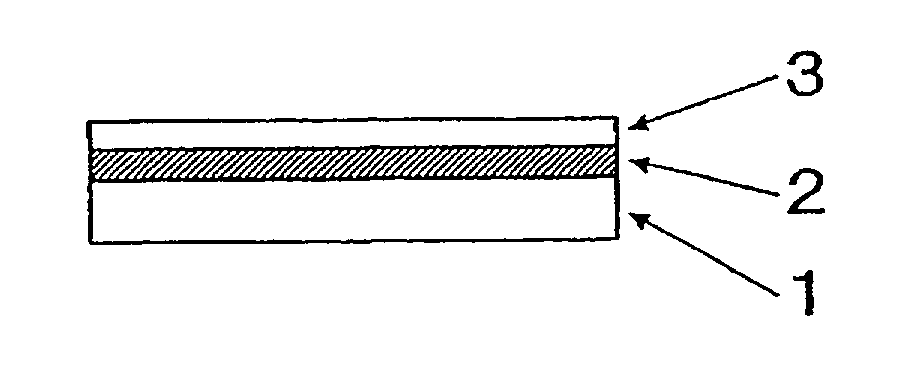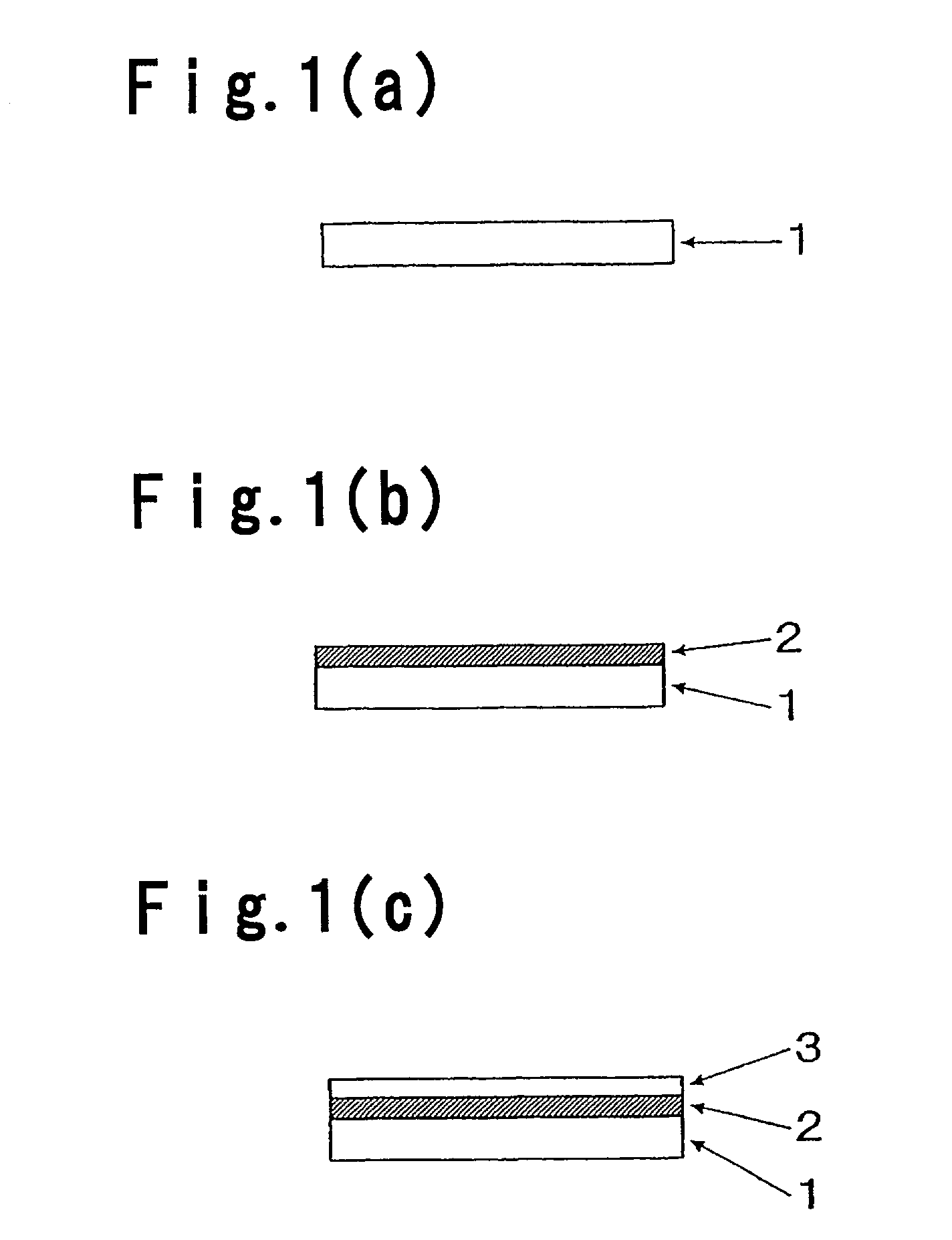Aqueous Adhesive
a technology of adhesives and water, applied in the field of adhesives, can solve problems such as bad influence on the safety, sanitation or environment conditions of workers
- Summary
- Abstract
- Description
- Claims
- Application Information
AI Technical Summary
Benefits of technology
Problems solved by technology
Method used
Image
Examples
experiment example 1
[0071]85 Parts by weight of water, 5 parts by weight of sodium rosinate having an acid value of 160, 0.8 part by weight of potassium hydroxide, 0.3 part by weight of a sodium salt of formaldehyde naphthalenesulfonic acid condensate and 0.3 part by weight of sodium hydrogensulfite were charged into a reactor having an inner volume of 3 l in a nitrogen atmosphere, and after dissolving the contents, 92 parts by weight of a chloroprene monomer, 8 parts by weight of 2,3-dichloro-1,3-butadiene and 0.03 part by weight of n-dodecyl mercaptan were added thereto with stirring. By using 0.1 part by weight of potassium persulfate as an initiator, polymerization was carried out at 40° C. in a nitrogen atmosphere, and when a final polymerization rate reached 90%, a phenothiazine emulsion was added thereto to terminate the polymerization. Unreacted monomers were removed under a reduced pressure to obtain a polychloroprene latex. Thereafter, the latex was concentrated by heating under a reduced pre...
experiment example 2
[0073]3.5 Mass parts of polyvinyl alcohol (Denkapoval B-05, manufactured by Denki Kagaku Kogyo K.K.) having a polymerization degree of 550 and a saponification degree of 88 mol % was dissolved in 96 mass parts of water at 60° C. in a nitrogen atmosphere by using a reactor having an inner volume of 3 l. The polyvinyl alcohol aqueous solution thus prepared was cooled close to room temperature, and 99 mass parts of a chloroprene monomer, 1 mass part of acrylic acid and 0.4 mass part of octyl mercaptan were then added thereto. While maintaining the resultant mixture at 45° C., polymerization was carried out by using sodium sulfite and pottasium persulfate as an initiator to obtain a polychloroprene latex. Thereafter, a 20 mass % diethanol amine aqueous solution was added to the polychloroprene latex to adjust to pH 7, and the resultant mixture was concentrated by heating under a reduced pressure so as to adjust to have a solid content of 55 mass %.
[0074]A solid content of the polychloro...
example 1
[0077]45 Parts by weight (in terms of solid content) of a terpenephenol resin type tackifier resin (Tamanol E-100, manufactured by Arakawa Chemical Industries, Ltd.), 2 parts by weight (in terms of solid content) of a sodium polyacrylate type thickner (Aron A-20L, manufactured by Toagosei Co., Ltd.) and 3 parts by weight of zinc white (zinc white class 2, manufactured by SAKAI CHEMICAL INDUSTRY CO., LTD.) were blended with 100 parts by weight (in terms of solid content) of the latex obtained in Experiment Example 1 to obtain a main agent.
[0078]An aqueous dispersion type isocyanate compound (Takenate WD-730, manufactured by Takeda Chemical Industries, Ltd.) having an isocyanate group-containing rate of 18.6 mass % was used alone as a curing agent in such an amount as to mix 3 mass parts of the aqueous dispersion type isocyanate compound to 100 mass parts solid content of the polychloroprene latex of the main agent. The two part aqueous adhesive thus prepared is referred to as “adhesi...
PUM
| Property | Measurement | Unit |
|---|---|---|
| Temperature | aaaaa | aaaaa |
| Fraction | aaaaa | aaaaa |
| Structure | aaaaa | aaaaa |
Abstract
Description
Claims
Application Information
 Login to View More
Login to View More - R&D
- Intellectual Property
- Life Sciences
- Materials
- Tech Scout
- Unparalleled Data Quality
- Higher Quality Content
- 60% Fewer Hallucinations
Browse by: Latest US Patents, China's latest patents, Technical Efficacy Thesaurus, Application Domain, Technology Topic, Popular Technical Reports.
© 2025 PatSnap. All rights reserved.Legal|Privacy policy|Modern Slavery Act Transparency Statement|Sitemap|About US| Contact US: help@patsnap.com


